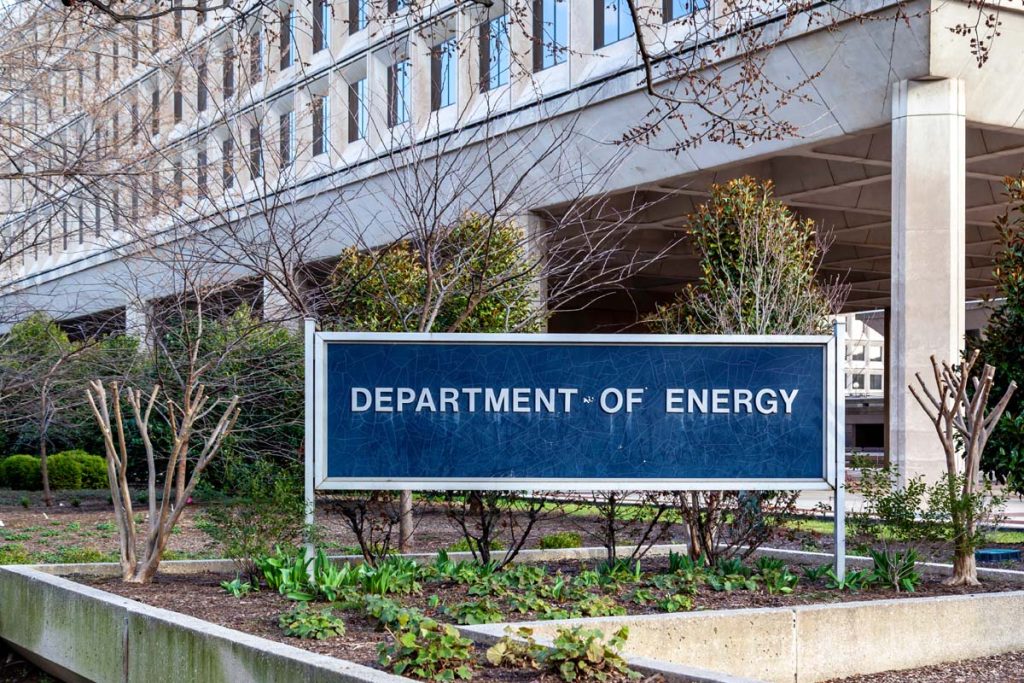
About 2% of total energy consumption in the U.S. is used to make plastics, resins and synthetic rubber, and the production of fossil-fuel-based plastics generates about 3.8% of global greenhouse gas emissions, according to a recent federal report. | JHVEPhoto/Shutterstock
The federal government is eyeing plastics recycling to tackle energy, environmental and manufacturing goals and the Department of Energy recently released an updated Strategy for Plastics Innovation report.
The U.S. Department of Energy (DOE) is interested in studying plastics recycling because of its connections to energy efficiency, environmental performance, climate change and energy-intensive and waste-intensive industries, the report noted.
About 2% of total energy consumption in the U.S. is used to make plastics, resins and synthetic rubber, and the production of fossil-fuel-based plastics generates about 3.8% of global greenhouse gas emissions, the report found.
“Plastic production also uses nearly 6% of global oil production, representing a large opportunity for further energy and process efficiency improvements,” the report stated, including bioplastics.
Researching those improvements falls to the Strategy for Plastics Innovation (SPI), which builds off the Plastics Innovation Challenge, a program the DOE started in 2019 focused on making domestic processing of plastics more economically viable and energy efficient, developing new plastics without the same end-of-life concerns and reducing plastic accumulation.
Focused research
The SPI has four main strategic goals centered on deconstruction, upcycling, recycling by design and scaling and deployment.
Deconstruction means creating new chemical, thermal and biological processes to break down plastics into useful chemical intermediates, the report stated. Upcycling aims to improve the scientific and technological foundations for turning those chemical intermediates into “high-value products.”
The goal of focusing on recyclable by design is to create plastics and bioplastics that have the same properties of current plastics but are easily upcycled. The final goal of scale and deployment is to put an energy- and material-efficient domestic plastics supply chain in place using both new technologies and improved existing technologies, including mechanical recycling.
Other goals include addressing more than 90% of plastics, providing at least 50% energy savings compared to virgin material production, achieving at least 75% carbon use from recycled plastics and designing recycling strategies to mitigate at least 50% of GHG emissions compared to virgin resin or plastic intermediate production.
Processes the research will target are thermal, chemical, biological and physical. The report laid out a series of fundamental and applied steps for each of the processes and sorted them into short-, medium- and long-term timelines.
Responding to challenges
One of the challenges the report laid out was that the current recycling process handles only a small fraction of the plastics produced. In particular the report highlighted multilayer packaging or thin-film packaging, which constitutes 8% of all plastics produced annually and cannot be recycled easily.
“In response to traditional recycling limitations, R&D efforts have enabled commercialization of biodegradable thermoplastic materials,” the report stated, but also noted that biodegradable materials “are not suitable for many applications due to the low flexibility of current-generation bioplastics.”
Additives also pose a challenge to overcome, the report stated, as “additive compositions and formulations are often proprietary and pose an unknown challenge or risk to recyclers.” To address that, SPI recommends technologies that consider additive-filled plastics over model materials.